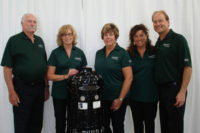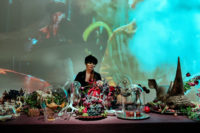Danfoss celebrates its 80th anniversary on September 1, 2013, since Mads Clausen founded the company in his parents’ farmhouse in Nordborg, Denmark. The business has grown from a solo enterprise into one of the world’s leading suppliers of energy-efficient and innovative solutions, employing a staff of 23,000 and with sales in more than 100 countries. Gaining an early footing on emerging markets and a clear focus on innovative products for its customers is part of the reason for this.
An international outlook
The company began exporting to other European countries as early as 1939, and in 1949 Danfoss set up its first foreign sales company in Argentina. During the 1950s, Danfoss established itself in USA and Germany, and when globalization began to pick up speed in the 1990s, Danfoss was prepared, with factories and sales companies in both Russia and China. Today, these four countries are Danfoss’ biggest markets.
Niels B. Christiansen, President and CEO, explains, “The global market has been a cornerstone for Danfoss, long before anyone even talked about globalization, and this has provided us with an international position we can be proud of. We were one of the first to get out there in the large emerging markets and have worked purposefully to build up good relations with our customers and business partners. Going forward, we will continue to focus on our main markets and the BRIC countries, Brazil, Russia, India and China, while also putting more efforts into new growth markets such as Turkey and Indonesia, where we have already gained experiences.”
Innovative products
Right from Mads Clausen’s first inventions, Danfoss has been devoted to developing innovative products that meet customers’ needs. It all started with the expansion valve to regulate refrigeration systems and continued with one of the world’s first radiator thermostats to regulate heating and the world’s first mass-produced frequency converters for the speed control of electric motors. Today, Danfoss has close to 50 different product lines and invests around 4% of its net sales in new and innovative products capable of saving the world large amounts of energy and CO2 — e.g., in food refrigeration, air conditioning, heating buildings, regulating the speed of electric motors, and in powering mobile machinery.
Christiansen says, “We are highly focused on ensuring our product development is based upon customer needs; specifically, that our customers are involved in product development from start to finish, ensuring that products are placed precisely in that field with greatest significance to our customers. In China, for example, we have developed a new series of products targeted to the needs of the Chinese market.”
A few facts about Danfoss throughout its 80 years:
1933: Mads Clausen starts the company under the name "Dansk Køleautomatik- og Apparat-Fabrik" and produces the first expansion valves for refrigeration systems.
1939: The first distributor contract is signed with the Dutch firm Itho.
1943: The invention of the radiator thermostat means that room temperatures can now be regulated without unnecessary waste.
1946: The company changes its name to Danfoss, which combines "Dan" in reference to the company's Danish background with "foss," which refers to the stream of fluid that flows through the valves and is regulated.
1949: The first 100% Danfoss owned sales company is set up in Buenos Aires, Argentina.
1958: Danfoss establishes sales companies in USA and Germany.
1968: The VLT® frequency converter is invented, and Danfoss becomes the first company to mass produce this technology. Some years later, the frequency converter is used to regulate the speed of the AUDI conveyor belt.
1993: Danfoss establishes a factory in Moscow, Russia.
1996: Danfoss establishes a factory in China. Jørgen M. Clausen, son of the company's founder, is made President of the Group.
2008: Niels B. Christiansen succeeds Jørgen M. Clausen as President of the Danfoss Group. The same year sees the start of the economic crisis.
2010: In response to the economic crisis and to the challenges faced by the company, the Core & Clear strategy is launched, and since then Danfoss has achieved high sales and earnings again.
2013: Danfoss purchases the remaining shares in Sauer-Danfoss, which the company does not yet own, and the two organizations are merged.








